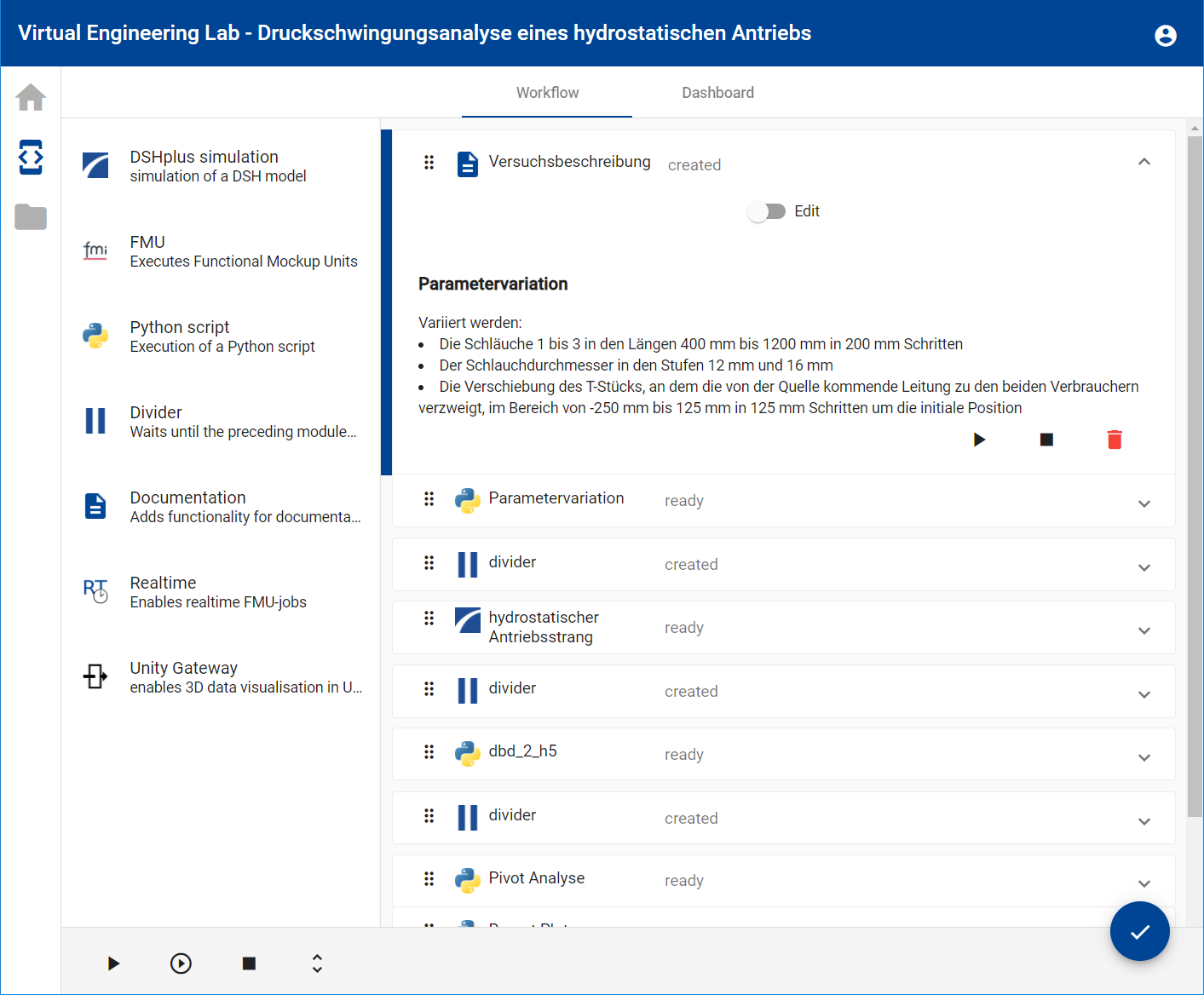The Orchestration of Workflows
The requirements for workflows during model-based development usually change from project to project. Fixed, monolithic workflows are disadvantageous here, as the underlying routines/scripts always have to be adapted to the new tasks in a time-consuming process.
The Orchestrator is designed as a software application for the graphical description of individual workflows from any technical domain. In addition to simulation workflows, these can also be workflows for measurement data evaluation.
For simulation workflows, digital twins from different simulation programmes can be integrated into the workflow using the FMU plug-in.
The composition of the workflow from predefined plug-ins and the use of Python for scripting enables flexible adaptation of workflows to a wide range of issues.
What Are the Advantages of Digital Twin Orchestration?
Setup and parameterisation of a digital twin (simulation model) is not an end in itself. Each digital twin serves to answer questions. The subsequent work with the digital twin is often characterised by recurring work steps (jobs), that can usually be automated.
- Each of these jobs (parameterisation, calculations, analysis, report generation, ...) is independent in itself, but interacts with other jobs.
- The orchestrator frees the developer from executing the recurring jobs and takes overall responsibility for controlling the dependencies and interaction of the jobs.
- The term orchestration originally comes from music. In IT, orchestration means the composition of several jobs (services) into a workflow (overall service)
- Through the sensible networking of individual jobs, complex workflows can be mapped with the orchestrator according to the Fork-Join-Model.

The Orchestrator Interface
The Orchestrator interface provides various modules for mapping the workflow.
- DSHplus simulation models can be loaded directly as a Fluidon Cube job, including all associated parameter sets. The calculation result contains all variables of the model.
- Linux FMU models (functional mock-up unit) from all FMI-compliant development tools can be imported. The calculation result contains the input and output signals of the FMU..
- Python scripts are used to realise pre-processing steps, e.g. to perform parameter studies or to generate training data for machine learning. Python is also a suitable tool for the subsequent post-processing of calculation results or measurement data and can be used for Big Data analyses.
- A documentation plugin is designed to describe the workflow with comments that can also contain formulae in LaTeX format.
- The Orchestrator can be coupled to fieldbus networks by a RT plugin. This provides the developer with virtual commissioning techniques for SiL and HiL applications.
-
The Unity Gateway plugin forwards data from Fluidon Cube to a 3D visualisation in real time.
Both the user interface with the plug-ins and the underlying software framework are based on open source toolkits and standardised interface definitions, making it very easy to add new jobs to a workflow and adapt it to company-specific requirements.




